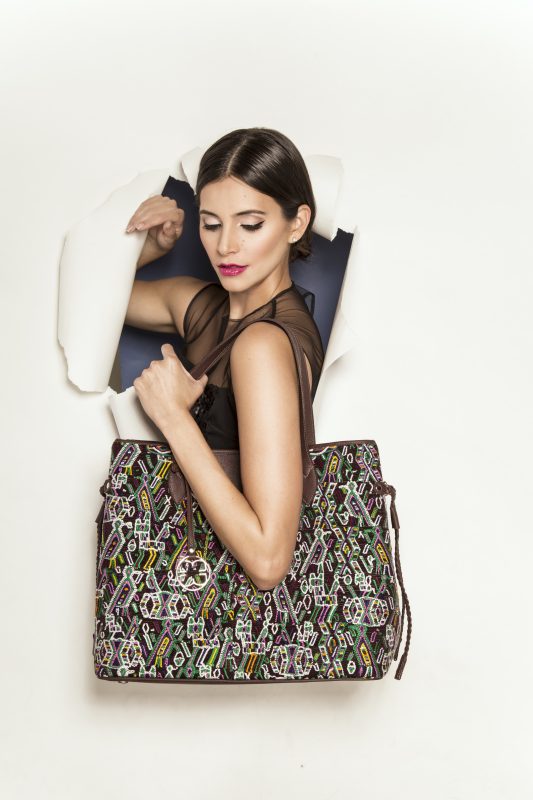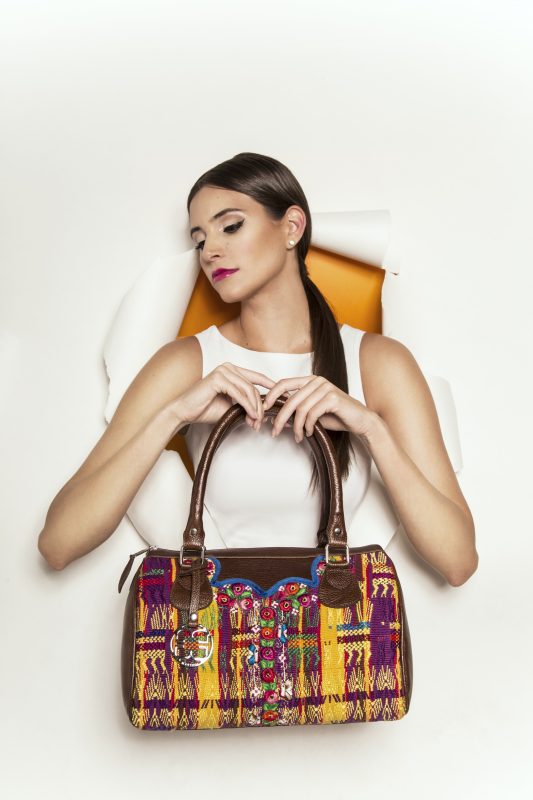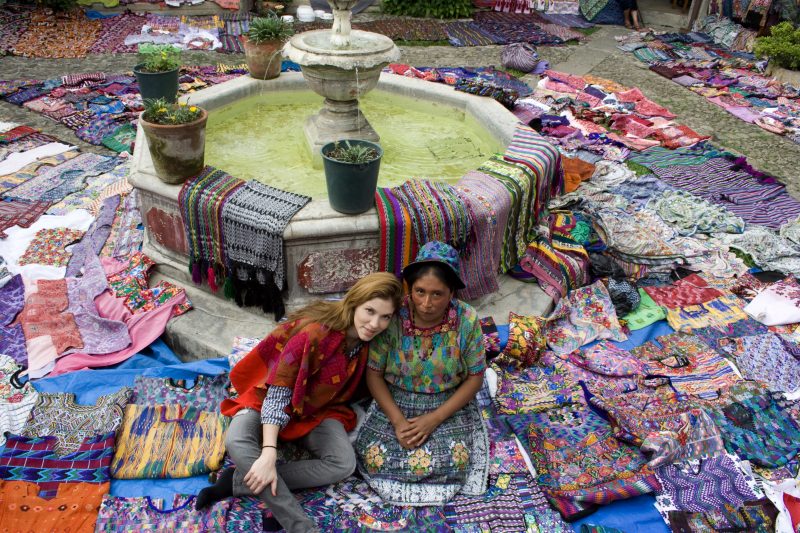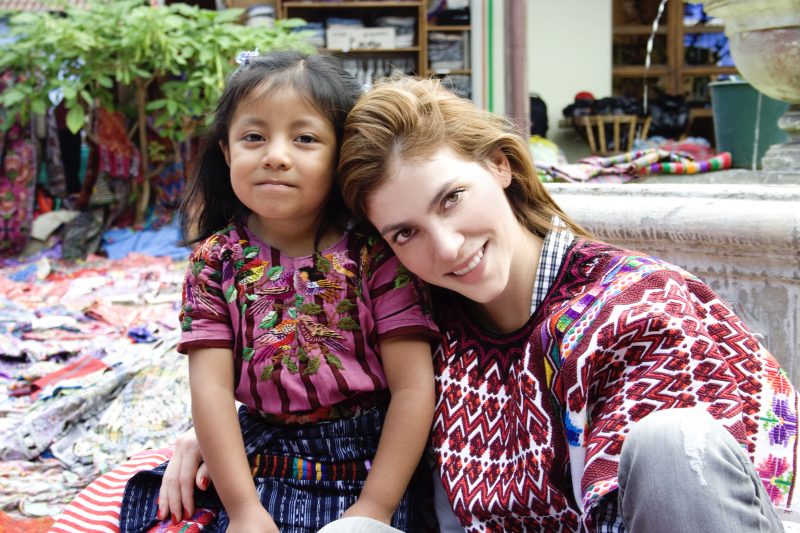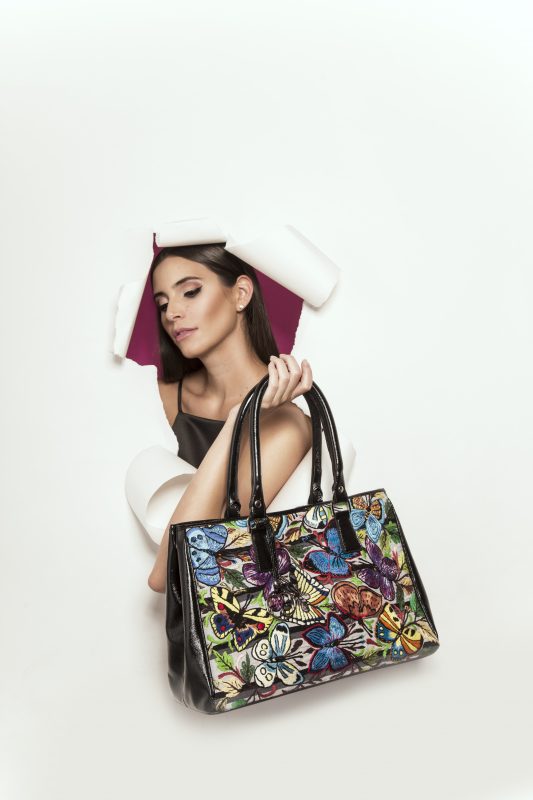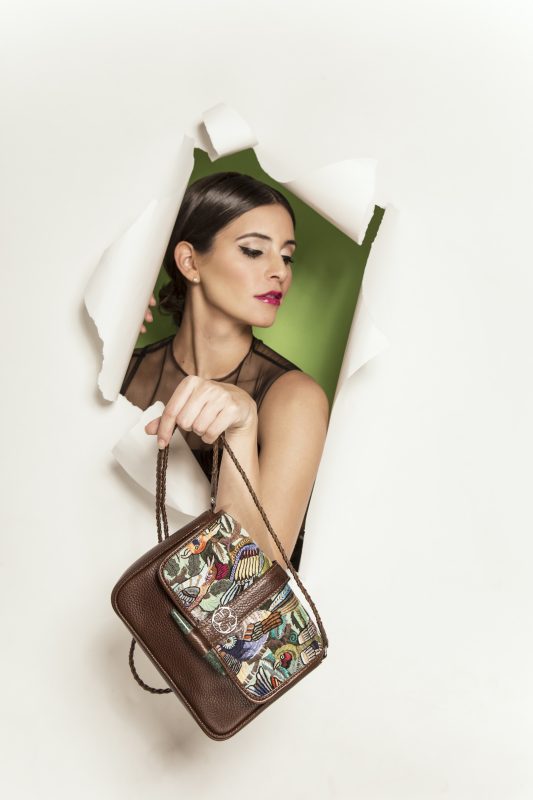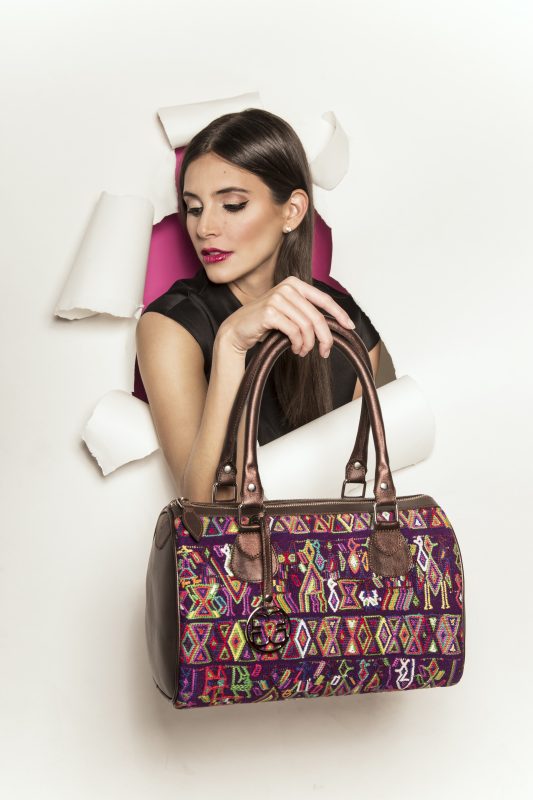When Guatemalan-born former Ford model Alida Boer began taking on charity work as part of her duties as a Miss Universe contestant, she uncovered the rich heritage crafts of her own country and the unique stories they could tell. After helping to open a school in an underprivileged neighborhood, Boer wanted to find an ongoing way to give back by teaching some of the children’s mothers how to create bags using native weaving techniques. Enter Maria’s Bags, one-of-a kind handcrafted and handwoven bags that give back to the local women and communities in underserved areas of Guatemala. We sat down with Boer in New York City’s Noho nabe to find out more about the socially conscious line.
What you were doing before you founded Maria’s Bags?
When I was 15 I started modeling. I was Miss Teen—there were about 20 girls. I was the youngest and I won. I ended up signing with Ford Models and went to live in Miami, where I started modeling, and some seasons I would go to Greece, Paris or Milan. When I came back to Guatemala, I opened a health clinic for alternative medicine that did things like acupuncture and reflexology. A good friend of mine said, ‘Why don’t you run for Miss Guatemala?’ And I said, ‘No, I’m over the pageants,’ because pageants and modeling are really two different things. I don’t know how he ended up convincing me. I enrolled, and I won that pageant.
What did you do after?
I stayed in Guatemala where I had to do Miss Universe. I had to do a lot of charity work and I started to travel to little towns to learn more about my own country. I started falling more and more in love with my country’s textiles.
When did you found Maria’s Bags?
Two years later, in 2011. I decided the best thing to do would be to showcase the art of these women and to put it in any part of the world. I started with three ladies, who happened to all be named Maria, which is how I came up with the name.
How did you find them?
In 2007, when I was in Guatemala, I helped open a little school. I decided I wanted some of the mothers of these kids to start a project, so that these kids could have an education while their mothers could have an income.
How did they learn the skills?
I did a casting, like you do for modeling. I brought a sewing machine, we put the women through an exercise, and we picked the three best.
Tell us about the textiles you use.
The textile technique is the main ingredient of the line. The technique has been around for hundreds of years and is part of our culture. I started working with a few women from small areas who already knew how to do that from home. The mothers from the school learned the craft from these other women. This particular type of Guatemalan textile has meaning, stories, and the color represents something—the women really put their creativity into it.
What have been the most powerful stories to come out of this project?
You really feel a change in the women, even in their appearance and how they feel. Most of their children end up having higher grades because they have access to better education, food, and nutrition. I’ve had women tell me, ‘You’ve changed my life because now I really feel important because I can have an income to help my family.’ But it’s also about preserving a local tradition that is native to Guatemala.
What do you want to do next with the brand?
I’m looking to expand to the U.S. market. We are in Latin America, of course, and from there we started with London. I want to bring this bag to every corner of the world to show what these women can do.
Do you think you’ll ever go beyond bags?
I think we could, in the future, do a few other things.
Any tourist tips for Guatemala?
Guatemala is really an amazing country. We have 21 different languages! It’s is full of colors, and that’s what our textiles represent. We have rainforests with Mayan pyramids, we have both oceans and beaches, and we have colonial cities. Plus, the people are extremely friendly and we have great food and some of the best rum!


